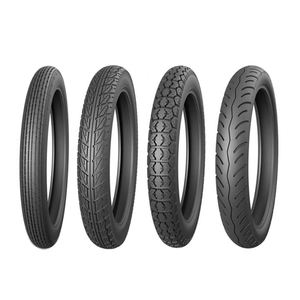Motorcycle Boots for Dummies
Getting My Motorcycle Boots To Work
Table of ContentsSome Ideas on Motorcycle Boots You Should KnowMotorcycle Boots - Questions5 Easy Facts About Motorcycle Boots ShownThe Ultimate Guide To Motorcycle BootsMore About Motorcycle BootsHow Motorcycle Boots can Save You Time, Stress, and Money.
The crucial components of contemporary motorcycles are provided below.; this has been made use of all with bike history yet is currently ending up being a lot more usual.It was commonly undesirable and normally considered a poor idea at the time. Today it is an utilized on some "thumpers" (single-cylinder four-strokes) that usually have dry-sump lubrication calling for an external oil storage tank. It has actually because obtained some cachet in the contemporary personalized bike world as well due to the area financial savings it can afford and the recommendation to an earlier period.
Any storage tank for fuel may be so called, the term is generally used to component of an engine system in which the gas is saved and propelled (fuel pump) or launched (pressurized gas) right into an engine. A bike fork is the section of a bike that holds the front wheel and permits one to guide.
4 Simple Techniques For Motorcycle Boots
The combination of rake and trail determines just how steady the motorcycle is. motorcycle boots. The 'fork' on a bike is composed of multiple parts. The triple trees (also referred to as yokes) hold the fork tubes (which consist of the fork springs), and are attached to the neck of the framework by the steering stem.

, which requires both lubrication and adjustment for elongation (stretch) that occurs with wear. The lube is subject to being thrown off the fast-moving chain and results in gunk and dirt build-up. Chains do weaken, and extreme wear on the front and back sprockets can be hazardous.
Traditional roller chain-drives experience the possibility for resonance, as the efficient span of action in a chain and sprocket combination continuously alters during the revolution ("chordal activity"). If a drive sprocket turns at constant RPM, then the chain (and the driven sprocket) needs to accelerate and slow down constantly. Many chain-driven motorbikes are fitted with a rubber bushed rear wheel center to remove this resonance concern.
These chain oilers vary in sophistication, but all include significantly to the life of the chain. The custom of lubing by submersing the chain in a tin of warm grease ceased in the very early 1970s, when most chains had rubber "O'-rings. The original Suzuki RE5 of 1975 featured a back chain oiler, however the 1976 model had a covered chain, and its oiler was erased as "unnecessary".
Not known Details About Motorcycle Boots
A toothed belt is regularly used. Nonetheless, they are not as resilient when based on high horsepower as a chain. You can not alter the length and adjustment final drive ratios as quickly as chains. They also can not wrap as carefully around chains. And require larger pulley-blocks compared to chain sprockets to get a reliable last drive ratio.
Inside the bell housing a bevel equipment on the shaft mates with another on the wheel mount. This plan is remarkable in terms of sound and tidiness and this hyperlink is basically maintenance-free, with the exception of periodic fluid modifications.
Nonetheless, the added equipment collections are a resource of power loss and added weight. A shaft-equipped bike might likewise be prone to shaft impact. Essentially all high-performance racing motorcycles use chain-drive because they are the most mechanically reliable sending power to the back wheel. A cable wheel and pneumatic motorcycle tire on a Ural The wheel edges are generally steel or light weight aluminum (normally with steel spokes and an aluminum hub) or mag-kind cast or machined light weight aluminum.

The Single Strategy To Use For Motorcycle Boots
There are tires created for dust bikes, touring, sporting activity and cruiser bikes. Dirt bike tires have knobbly, deep footsteps for maximum hold on loosened dust, mud, or gravel; such tires have a tendency to be much less stable and noisier on paved surface areas.
Touring tires are normally constructed from a more challenging rubber substance for greater toughness, these may last longer however often tend to offer much less straight-out grasp compared to sports tires at ideal operating temperature levels. Touring tires usually supply more hold at reduced temperature levels and can be extra suited to riding in chilly or winter months conditions where a sport tire may never reach its ideal operating temperature level.
These often tend to have more powerful sidewalls as they are typically fitted to much heavier makers. Motorsport or competing tires supply the highest possible of degrees of grasp. Due to the heats at which these tires usually operate, utilize outside a racing atmosphere is dangerous, commonly these tires do not reach their maximum temperature level which gives much less than optimum grasp.
Motorcycle Boots for Beginners

This can lead to brake dive. Brakes can either be drum or disc based, with disc brakes being more common on large, modern-day or a lot more costly motorbikes for their far superior quiting power, especially in wet conditions. There are several brake-performance-enhancing aftermarket parts readily available for a lot of motorbikes, including brake pads of varying substances and steel-braided brake lines.